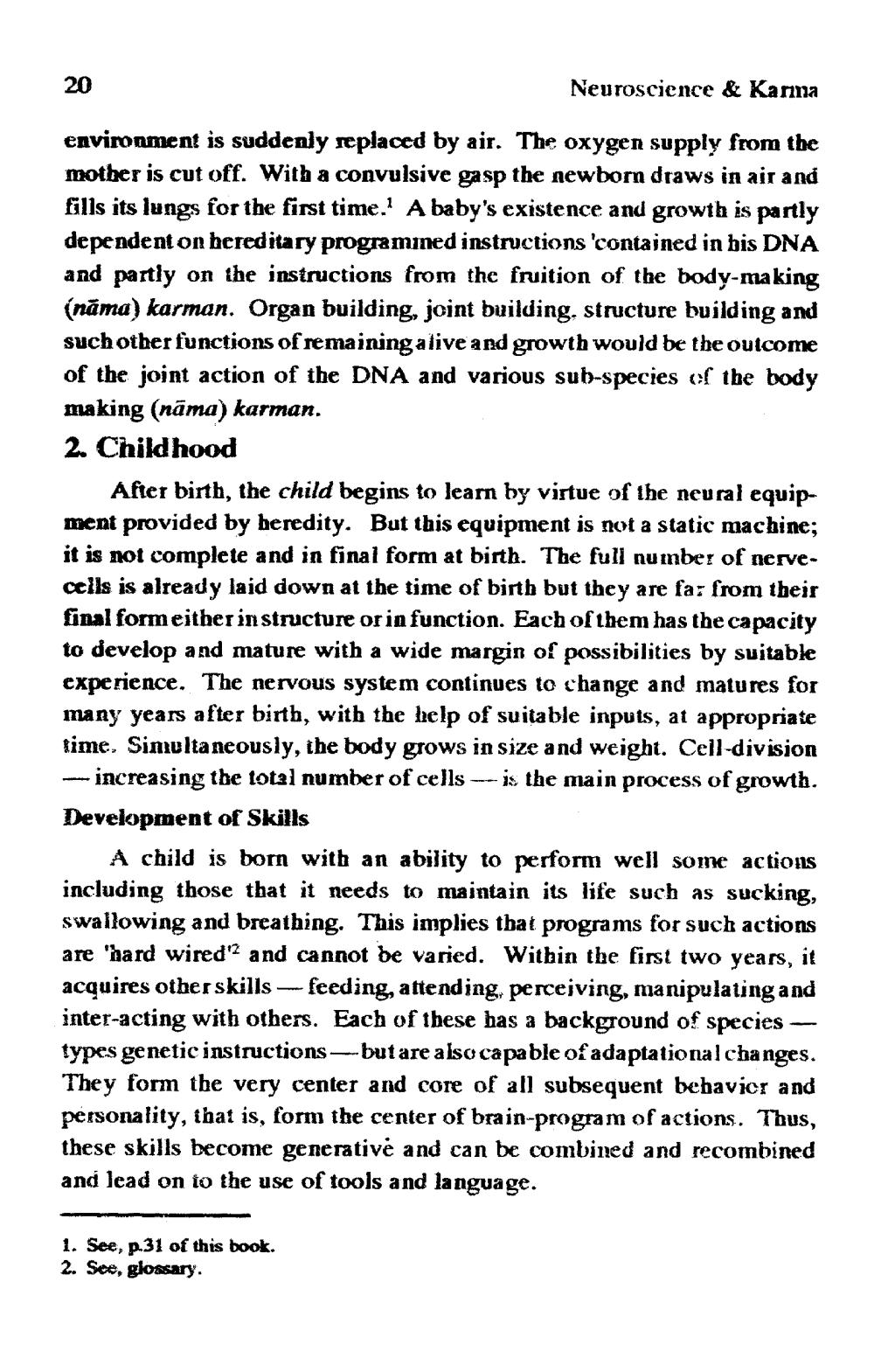________________
20
Neuroscience & Kanna
environment is suddenly replaced by air. The oxygen supply from the mother is cut off. With a convulsive gasp the newborn draws in air and fills its lungs for the first time. A baby's existence and growth is partly dependent on hereditary programined instructions 'contained in bis DNA and partly on the instructions from the fruition of the body-making (nāma) karman. Organ building, joint building, structure building and such other functions of remaining alive and growth would be the outcome of the joint action of the DNA and various sub-species of the body making (nāma) karman. 2. Childhood
After birth, the child begins to learn by virtue of the neural equipment provided by heredity. But this equipment is not a static machine; it is not complete and in final form at birth. The full number of nervecells is already laid down at the time of birth but they are far from their final form either instructure or in function. Each of them has the capacity to develop and mature with a wide margin of possibilities by suitable experience. The nervous system continues to change and matures for many years after birth, with the help of suitable inputs, at appropriate time. Simultaneously, the body grows in size and weight. Cell-division - increasing the total number of cells -- is the main process of growth. Development of Skills
A child is born with an ability to perform well some actions including those that it needs to maintain its life such as sucking, swallowing and breathing. This implies that programs for such actions are 'hard wired'? and cannot be varied. Within the first two years, it acquires other skills -- feeding, attending, perceiving, manipulating and inter-acting with others. Each of these has a background of species — types genetic instructions --but are also capable of adaptational changes. They form the very center and core of all subsequent bebavior and personality, that is, form the center of brain-program of actions. Thus, these skills become generative and can be combined and recombined and lead on to the use of tools and language.
1. See, p.31 of this book. 2. See, glossary.




